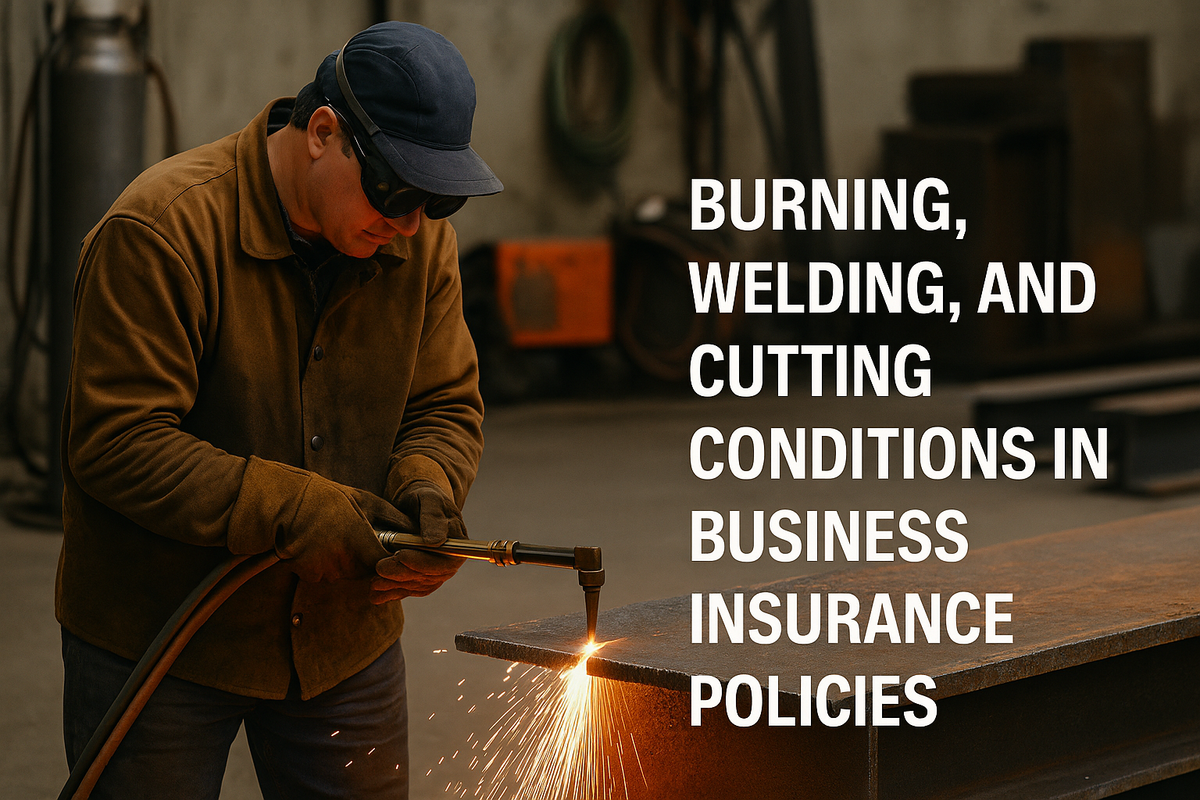
By Jenny Holly Hansen | WBN News | May 22, 2025
In commercial operations where heat-producing activities such as burning, welding, and cutting are part of routine tasks, the risk of fire and property damage increases significantly. Due to the potential hazards associated with these activities, insurers often impose specific conditions or exclusions within business insurance policies. Understanding how these provisions work is essential for ensuring proper coverage and risk management.
What Are Burning, Welding, and Cutting Conditions?
These conditions refer to safety protocols and requirements that a business must follow when performing hot work, which includes operations like:
- Oxy-fuel or electric arc welding
- Cutting or grinding metal
- Soldering or brazing
- Use of blow torches or similar equipment
The goal of these conditions is to minimize the risk of accidental fire, explosion, or other damage that could result from the high heat, sparks, or flammable materials often involved in hot work.
Why These Conditions Matter to Insurers
Hot work is a leading cause of commercial and industrial fires. According to fire safety authorities, many fire incidents linked to welding and cutting occur due to a lack of fire-watch supervision, improper equipment use, or insufficient preparation of the work area.
As a result, insurers commonly include warranties, endorsements, or exclusions in commercial property and liability policies. These outline specific requirements that businesses must meet when conducting such operations.
Common Insurance Requirements and Warranties
Policies that cover businesses engaging in hot work typically include conditions such as:
- Pre-Work Hazard Assessment: A formal inspection of the work area to identify flammable materials and fire hazards.
- Hot Work Permit System: A documented permit process that authorizes the activity and outlines safety procedures to be followed.
- Fire Watch Protocols: Requiring a designated fire watch to monitor the work area during and for a period after the hot work is completed (often 30–60 minutes).
- Fire-Resistant Shields and Barriers: Use of protective coverings to isolate sparks and heat from combustible materials.
- Readily Available Fire Extinguishers: Workers must have immediate access to extinguishers, and be trained in their use.
- Proper Ventilation: Especially in enclosed areas, to avoid buildup of flammable gases or fumes.
- Qualified Personnel: Only trained and authorized individuals should perform hot work operations.
Impact of Non-Compliance on Insurance Coverage
Failure to comply with burning, welding, and cutting conditions can result in a denial of coverage in the event of a claim. If a fire or property damage occurs during or following unauthorized or improperly managed hot work, the insurer may reject the claim based on breach of policy conditions.
This can lead to significant out-of-pocket costs for property damage, legal liability, and business interruption—particularly in industries like construction, fabrication, automotive repair, and manufacturing.
Risk Mitigation and Best Practices
Businesses that regularly engage in welding and cutting activities are encouraged to:
- Implement a formal hot work policy based on industry best practices.
- Train all employees involved in hot work on safety procedures.
- Coordinate with their insurance provider to ensure all conditions are understood and met.
- Review their commercial property and liability policies for any exclusions or endorsements related to hot work.
Conclusion
Burning, welding, and cutting conditions are not just safety guidelines—they are binding components of many business insurance policies. Understanding these requirements and integrating them into workplace protocols is critical to maintaining both safety and insurability. Businesses that fail to address hot work risks may find themselves unprotected in the face of costly claims.
Regular communication with a licensed insurance broker can help ensure that coverage remains adequate and that all operational risks are appropriately managed under the terms of the policy.
Let’s Keep Talking:
Jenny is a business insurance broker with Waypoint Insurance. With 19 years experience, she will well versed in the technical aspects of business coverages.
She can be reached at 604-317-6755 or jholly-hansen@wbnn.news. Connect with Jenny on LinkedIn at https://www.linkedin.com/in/jenny-holly-hansen-365b691b/. Connect with Jenny at BlueSky: https://bsky.app/profile/jennyhollyhansen.bsky.social
Let’s Meet Up:
Jenny Holly Hansen is a cohost with Chris Sturges of the Langley Impact Networking Group. You are welcome to join us on Thursday’s from 4pm to 6pm at: Sidebar Bar and Grill: 100b - 20018 83A Avenue, Langley, BC V2Y 3R4
TAGS: #Jenny Holly Hansen #Protect Your Business #Burning, Welding, and Cutting



